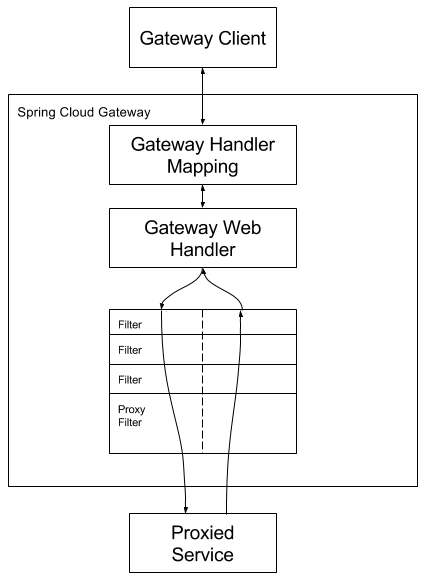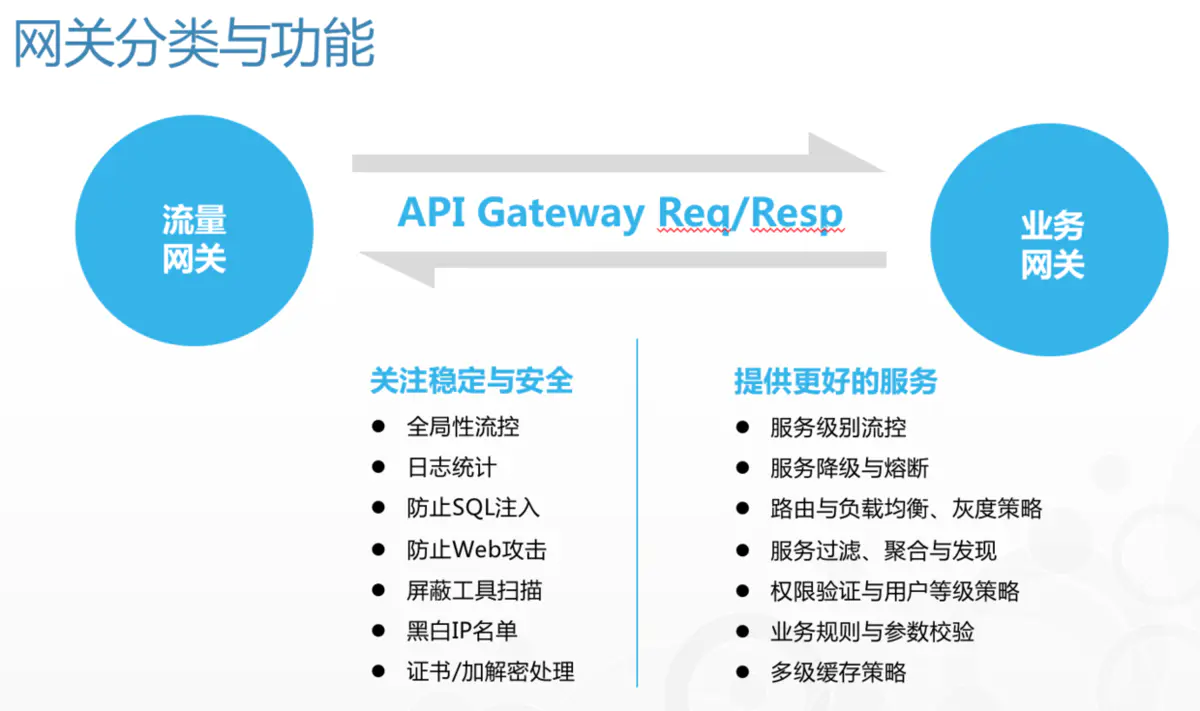安装 Consul 有关如何安装 Consul 的说明,参阅安装文档 installation documentation 。
Consul Agent 所有 Spring Cloud Consul 应用程序都必须有 Consul Agent。默认情况下,代理客户端位于 localhost:8500。有关如何启动代理客户端以及如何连接到 Consul 代理服务器群集的详细信息,参阅 Agent documentation 。为了进行开发,安装 Consul 后,可以使用以下命令启动 Consul 代理:
1 ./src/main/bash/local_run_consul.sh
这将在端口 8500上以服务器模式启动代理,并在 http://localhost:8500/ 上提供用户界面。
服务发现与 Consul 服务发现是基于微服务架构的关键原则之一。尝试手动配置每个客户端或某种形式的约定可能非常困难,也可能非常脆弱。Consul 通过 HTTP API 和 DNS 提供服务发现服务。Spring Cloud Consul 利用 HTTP API 进行服务注册和发现。这并不妨碍非 Spring Cloud 应用程序利用 DNS 接口。Consul Agents 服务器在集群中运行,集群通过 gossip 协议进行通信,并使用 Raft 共识协议。
激活 要激活 Consul 服务发现,,需引入以下依赖:
1 2 3 4 <dependency > <groupId > org.springframework.cloud</groupId > <artifactId > spring-cloud-starter-consul-discovery</artifactId > </dependency >
注册 与 Consul 当客户端向 Consul 注册时,它会提供有关自身的元数据,如主机和端口、id、名称和标签。默认情况下,会创建一个 HTTP 检查,Consul 每 10 秒访问一次 /health 端点。如果运行状况检查失败,则将服务实例标记为严重。
1 2 3 4 5 6 7 8 9 10 11 12 13 14 @SpringBootApplication @RestController public class Application @RequestMapping ("/" ) public String home () return "Hello world" ; } public static void main (String[] args) new SpringApplicationBuilder(Application.class ).web (true ).run (args ) ; } }
(即完全正常的 Spring Boot 应用程序)。如果 Consul 客户端位于 localhost:8500 以外的其它位置,则需要配置来定位客户端。示例:
1 2 3 4 5 spring: cloud: consul: host: localhost port: 8500
注意: 如果使用 Spring Cloud Consul Config,则需要将上述值放在 bootstrap.yml 而不是 application.yml 中。
从环境中获取的默认服务名、实例 id 和端口分别是 ${spring.application.name}、Spring Context ID 和 ${server.port}。
要禁用 Consul Discovery客户端,可以将 spring.cloud.consul.discovery.enabled 设置为 false。当 spring.cloud.discovery.enabled 设置为 false 时,Consul Discovery Client 也将被禁用。
要禁用服务注册,可以将 spring.cloud.consul.discovery.register 设置为 false。
HTTP 健康检查 Consul 实例的健康检查默认为 “/health”,这是 Spring Boot Actuator 应用程序中一个有用的端点的默认位置。如果使用非默认的上下文路径或 servlet 路径(例如 server.servletPath=/foo)或 management 端点路径(例如 management.server.servlet.context-path=/admin),则即使是 Actuator 应用程序,也需要更改这些内容。Consul 用来检查健康端点的时间间隔也可以配置。“10s” 和 “1min” 分别代表 10 秒和 1 分钟。示例:
1 2 3 4 5 6 spring: cloud: consul: discovery: healthCheckPath: ${management.server.servlet.context-path}/health healthCheckInterval: 15s
可以通过设置 management.health.consul.enabled=false 来禁用运行状况检查。
元数据和 Consul 标签 Consul 还不支持服务的元数据。Spring Cloud 的 ServiceInstance 有一个 Map<String,String> 元数据字段。在 Consul 正式支持元数据之前,Spring Cloud Consul 使用 Consul 标记来近似元数据。格式为 key=value 的标签将被拆分,并分别用作映射键和值。不带等号的标记将同时用作键和值。
1 2 3 4 5 spring: cloud: consul: discovery: tags: foo=bar, baz
上面的配置将得到一个 foo→bar 和 baz→baz 的映射。
使 Consul 实例 ID 唯一 默认情况下,Consul 实例注册的 ID 等于它的 Spring 应用程序上下文 ID。默认情况下,Spring 应用程序上下文 ID 是 ${spring.application.name}:comma,separated,profiles:${server.port}。对于大多数情况,这将允许一台机器上运行一个服务的多个实例。如果需要进一步的唯一性,通过使用 Spring Cloud,可以通过在 spring.cloud.consul.discovery.instanceId 中提供唯一的标识符来覆盖它。例如:
1 2 3 4 5 spring: cloud: consul: discovery: instanceId: ${spring.application.name}:${vcap.application.instance_id:${spring.application.instance_id:${random.value}}}
有了这个元数据和部署在 localhost 上的多个服务实例,随机值将进入其中,使实例唯一。在 Cloudfoundry 中,vcap.application.instance_id 将在 Spring 引导应用程序中自动填充,因此不需要随机值。
Headers 可以应用于健康检查请求。例如,如果要注册使用了 Vault Backend 的 Spring Cloud Config 服务:
1 2 3 4 5 6 spring: cloud: consul: discovery: health-check-headers: X-Config-Token: 6442e58b-d1ea-182e-cfa5-cf9cddef0722
根据 HTTP 标准,每个 header 可以有多个值,在这种情况下,可以提供一个数组:
1 2 3 4 5 6 7 8 spring: cloud: consul: discovery: health-check-headers: X-Config-Token: - "6442e58b-d1ea-182e-cfa5-cf9cddef0722" - "Some other value"
查找服务 使用 Load-balancer Spring Cloud 支持 Feign 和 Spring RestTemplate,用于使用逻辑服务 names/id 而不是物理 URLs 查找服务。Feign 和 discovery-aware RestTemplate 都利用 Ribbon 来实现客户端负载平衡。
如果我们想使用 RestTemplate 访问服务 STORES,只需声明:
1 2 3 4 5 @LoadBalanced @Bean public RestTemplate loadbalancedRestTemplate () return new RestTemplate(); }
并像这样使用(注意我们如何使用 Consul 中的 STORES 服务 name/id 而不是完全限定的域名):
1 2 3 4 5 6 @Autowired RestTemplate restTemplate; public String getFirstProduct () return this .restTemplate.getForObject("https://STORES/products/1" , String.class ) ; }
如果我们在多个数据中心中有 Consul 集群,并且希望访问另一个数据中心中的服务,仅使用服务 name/id 是不够的。在这种情况下,使用属性 spring.cloud.consul.discovery.datacenters.STORES=dc-west,其中 STORES 是服务 name/id,dc-west 是 STORES 服务所在的数据中心。
Spring Cloud 现在还支持Spring Cloud LoadBalancer。
注意: 由于 Spring Cloud Ribbon 目前处于维护中,建议大家将 Spring.Cloud.loadbalancer.Ribbon.enabled 设置为 false,以便使用 BlockingLoadBalancerClient 而不是 RibbonLoadBalancerClient。
使用 DiscoveryClient 我们还可以使用 org.springframework.cloud.client.discovery.DiscoveryClient,它为非特定于 Netflix 的发现客户端提供了一个简单的 API。
1 2 3 4 5 6 7 8 9 10 11 @Autowired private DiscoveryClient discoveryClient;public String serviceUrl () List<ServiceInstance> list = discoveryClient.getInstances("STORES" ); if (list != null && list.size() > 0 ) { URI uri = list.get(0 ).getUri(); ... } return null ; }
Consul Catalog Watch Consul Catalog Watch 利用 Consul 的能力来 watch services 。Catalog Watch 执行一个阻塞的 Consul HTTP API 调用,以确定是否有任何服务发生了变化。如果有新的服务数据,就会发布 Heartbeat Event。
可以通过调整 spring.cloud.consul.config.discovery.catalog-services-watch-delay 的值,来改变 Config Watch 调用的频率。默认值是 1000,以毫秒为单位。延迟是上一次调用结束和下一次调用开始后的时间量。
要禁用 Catalog Watch,设置 spring.cloud.consul.discovery.catalogServicesWatch.enabled=false。
该 watch 使用一个 Spring TaskScheduler 来调度与 Consul 的通话。默认情况下,它是一个 poolSize 为 1 的 ThreadPoolTaskScheduler。若要更改 TaskScheduler,需要创建一个类型为 TaskScheduler 的 bean,该 bean 的名称为 ConsulDiscoveryClientConfiguration.CATALOG_WATCH_TASK_SCHEDULER_NAME 常数。
Consul 分布式配置 Consul 提供用于存储配置和其它元数据的 Key/Value Store 。Spring Cloud Consul Config 是 Config Server and Client 的替代品。Configuration 是在特殊的“bootstrap”阶段被加载到Spring Environment 中。Configuration 默认存储在 /config 文件夹中。根据应用程序的名称和激活的 profiles 创建多个 PropertySource 实例,这些激活的 profiles 模仿 Spring Cloud Config 中解析属性的顺序。例如,一个名为“testApp”并带有“dev” profile 的应用程序将创建以下属性源:
1 2 3 4 config/testApp,dev/ config/testApp/ config/application,dev/ config/application/
最具体的属性源位于顶部,最不具体的位于底部。config/application 文件夹中的属性适用于使用 Consul 进行配置的所有应用程序。config/testApp 文件夹中的属性仅对名为“testApp”的服务实例可用。
当前 Configuration 是在应用程序启动时读取。向 /refresh 发送 HTTP POST 将导致重新加载配置。Config Watch 还将自动检测变化并重新加载应用程序上下文。
激活 要开始使用 Consul Configuration,需引入以下依赖:
1 2 3 4 <dependency > <groupId > org.springframework.cloud</groupId > <artifactId > spring-cloud-starter-consul-config</artifactId > </dependency >
这将启用 Spring Cloud Consul Config 的自动装配。
定制 Consul Config 可以使用以下属性自定义:
1 2 3 4 5 6 7 8 spring: cloud: consul: config: enabled: true prefix: configuration defaultContext: apps profileSeparator: '::'
enabled 将此值设置为 false 将禁用 Consul Config。
prefix 设置配置值的基本文件夹。
defaultContext 设置所有应用程序使用的文件夹名。
profileSeparator 设置用于用 profiles 文件分隔属性源中的概要文件名称的分隔符的值
Config Watch Consul Config Watch 利用 Consul 的能力来 watch a key prefix 。Config Watch 执行阻塞的 Consul HTTP API 调用,以确定当前应用程序的任何相关配置数据是否已更改。如果有新的配置数据,则会发布刷新事件。这相当于调用了 /refresh actuator 端点。
可以通过调整 spring.cloud.consul.config.watch.delay 的值,来改变 Config Watch 调用的频率。默认值是 1000,以毫秒为单位。延迟是上一次调用结束和下一次调用开始后的时间量。
要禁用 Config Watch,设置 spring.cloud.consul.config.watch.enabled=false。
该 watch 使用一个 Spring TaskScheduler 来调度与 Consul 的通话。默认情况下,它是一个 poolSize 为 1 的 ThreadPoolTaskScheduler。若要更改 TaskScheduler,需要创建一个类型为 TaskScheduler 的 bean,该 bean 的名称为 ConsulConfigAutoConfiguration.CONFIG_WATCH_TASK_SCHEDULER_NAME 常数。
YAML 或 Properties 与配置 与单独的 key/value 对相比,以 YAML 或 Properties 格式存储配置属性可能更方便。设置 spring.cloud.consul.config.format 属性为 YAML 或 PROPERTIES。例如使用 YAML:
1 2 3 4 5 spring: cloud: consul: config: format: YAML
YAML 必须在 Consul 的适当 data key 中设置。使用上面的默认 keys 看起来像:
1 2 3 4 config/testApp,dev/data config/testApp/data config/application,dev/data config/application/data
我们可以在上面列出的任意 keys 中存储 YAML 文档。
我们可以使用 spring.cloud.consul.config.data-key 来更改 data key。
git2consul 与配置 git2consul 是一个 Consul 社区项目,它将文件从 git 存储库加载到 Consul 中的各个 key 中。默认情况下,key 的名称是文件的名称。YAML 和 Properties 文件分别支持 .yml 和 .properties 文件扩展名。设置 spring.cloud.consul.config.format=FILES。例如:
1 2 3 4 5 spring: cloud: consul: config: format: FILES
在 /config 中给定以下 keys,development profile 和 foo 的 application name:
1 2 3 4 5 6 7 .gitignore application.yml bar.properties foo-development.properties foo-production.yml foo.properties master.ref
将创建以下属性源:
1 2 3 config/foo-development.properties config/foo.properties config/application.yml
每个 key 的值必须是格式正确的 YAML 或 Properties 文件。
快速失败(Fail Fast) 在某些情况下(如本地开发或某些测试场景),如果 Consul 无法进行配置,则不失败可能很方便。在 bootstrap.yml 中设置 spring.cloud.consul.config.failFast=false 可以让配置模块记录一个警告,而不是抛出一个异常。这将允许应用程序继续正常启动。
Consul 重试 如果我们预计在应用程序启动时 Consul Agent 偶尔不可用,可以要求它在失败后继续尝试。我们需要将 spring-retry 和 spring-boot-starter-aop 添加到类路径中。默认行为是重试 6 次,初始回退间隔为 1000ms,后续回退的指数乘数为 1.1。我们可以使用 spring.cloud.consul.retry.* 配置属性来配置这些属性(以及其它属性)。这可以在 Spring Cloud Consul Config 和 Discovery registration 中使用。
要完全控制重试,可以添加一个类型为 RetryOperationsInterceptor、id 为 consulRetryInterceptor 的 @Bean。Spring Retry 提供了一个 RetryInterceptorBuilder,可以很容易地创建一个。
Spring Cloud Bus 与 Consul 激活 要开始使用 Consul Bus,需引入以下依赖:
1 2 3 4 <dependency > <groupId > org.springframework.cloud</groupId > <artifactId > spring-cloud-starter-consul-bus</artifactId > </dependency >
有关可用的 actuator 端点和如何发送自定义消息,参阅 Spring Cloud Bus 文档。
配置属性 要查看所有 Consul 相关配置属性的列表,请查看附录页面 。
参考资料
Spring Cloud Consul


